Tricks for UE Edema Management
By: Dalton Busch
Edema is seen in patients for many reasons whether that be from an injury, lack of movement in the UE, side effects of a new medication, and even possible underlying medical conditions. Edema can not only add discomfort to our patients but also limit the number of daily activities they can perform. How their edema is managed comes down to patient preference, what fits best within their day, and the overall effectiveness of the technique chosen. Below are 7 tricks your patients can utilize to manage their edema symptoms.
1.) Elevation: This trick is not only simple but also one of the most effective ways for patients to reduce edema. Assure you instruct the patient to elevate above the heart with the hand over the elbow. “The concept of a drop of water being able to run downhill to the heart without ever encountering an uphill run helps patients visualize adequate elevation” (Vasudevan, 1979).
2.) Exercises: The use of exercise creates compression of the veins and lymphatic vessels by muscle pumping and soft tissue movements (Buncke, et al, 1995). Several exercises can be introduced to the patient to complete throughout the day. A simple one to reduce hand edema is going into a power grip and then fully straightening the fingers to help move the fluid. Another exercise utilized is the ‘apple pickers’ movement that integrates more shoulder involvement. This can be modified if the patient is dealing with shoulder pain. Apple Pickers described: 160 degrees shoulder flexion, elbow extension, forearm pronated, hand open, shoulder adducted with the elbow flexed, hand open, and forearm supinated to finish the exercise.
3.) Targeted Kinesio Taping: Kinesio taping is an effective modality that can be used in conjunction with other edema management techniques. Kinesio taping assists in pushing the fluid proximally towards the venous and lymphatic systems of the patient. The tape is said to mimic the skin and create greater space between the fascia and soft tissues to create greater lymphatic drainage (Miller, et al., 2017). There are several ways one may go about taping the hand, here is an example of one of many.
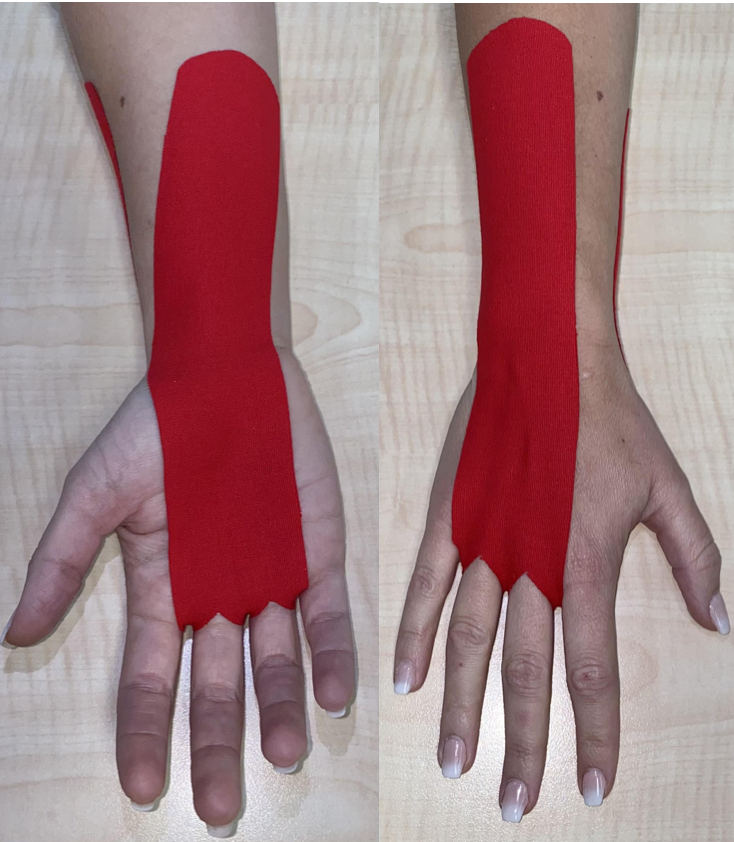
4.) Manual Edema Mobilization (MEM): Manual Edema Mobilization is a technique that was created in 1995 and is a great technique for postsurgical, trauma, and CVA patients to name a few (Artzberger, 1997). MEM is stated as a light massage with pressure given to the area ranging from 20-30 mm Hg that flows with the lymphatic pathways. The direction of the massage is to always end towards the trunk and is an exercise that does not cause further inflammation to the involved area. Specific home massage programs can be given to the patient if this method is effective for their edema management.
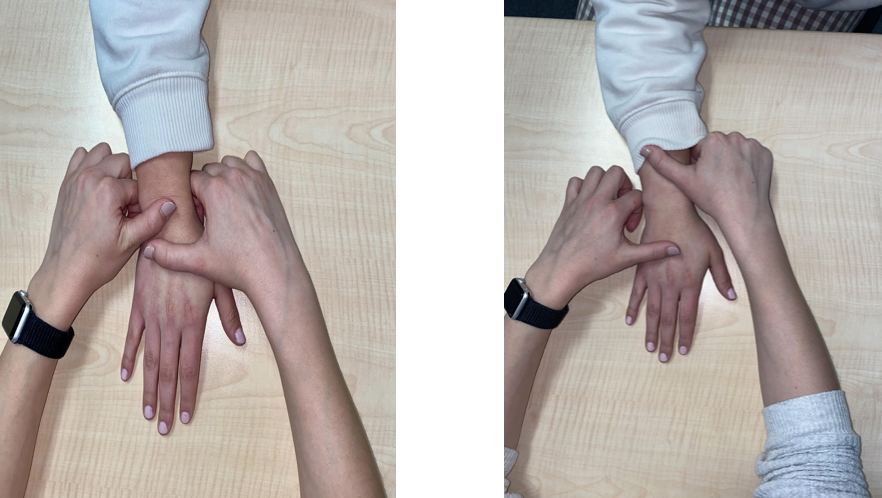
5.) Contrast Baths: This method of edema management utilizes submerging the hand in both hot and cold water to enhance circulation. By alternating between both water temperatures, the blood vessels begin to both open (vasoconstriction) and close (vasodilation). This creates a pump-like motion within the hand that helps push unwanted fluid out of the extremity. This can not only reduce edema but has also been shown to help with pain management.
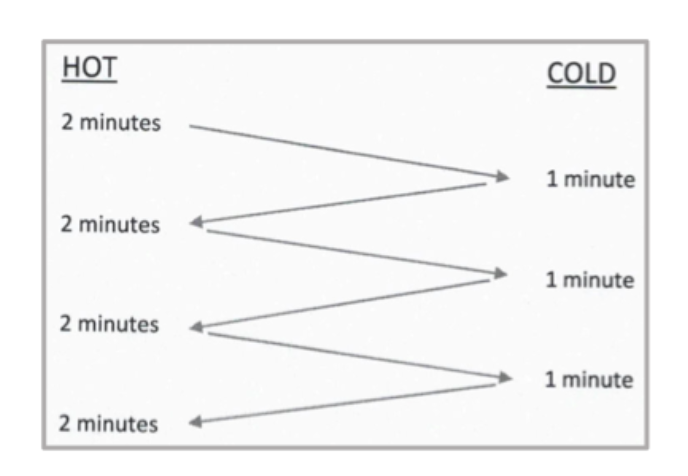
6.) Chip Bags: These are a great way to control edema while also utilizing items that are in the clinic. Grab a stockinette, fill it with foam pieces of various densities and sizes (exercise blocks, padding, soft velcro), and seal the stockinette. This can be placed over the hand and secured with more compression garments or by simply ace wrapping the area. Chip bags can also be used in conjunction with orthotics. The chip bags help create light traction within the hand and produce warmth to help flush out unwanted edema.

7.) Cryotherapy: This modality is not only great for vasoconstriction and overall inflammation, but also for pain management pre/post-treatment sessions. Cryotherapy is a cold modality and can include cold packs, ice massage, cryosphere and many other options as this trick is very versatile. Assure patients utilizing cryotherapy do not have sensory impairments in the UE.
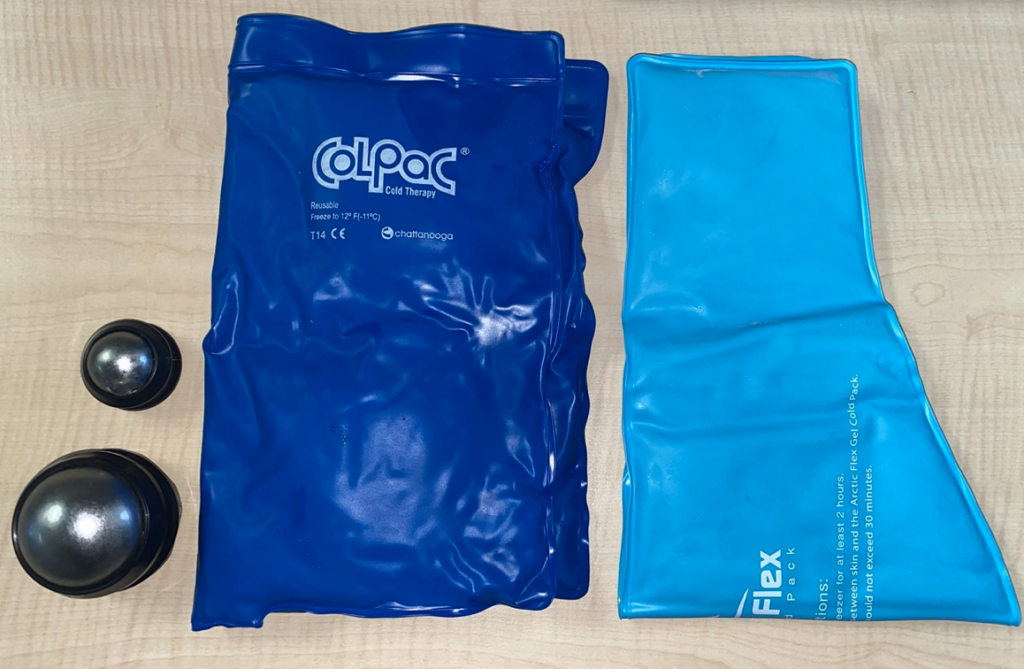
References
Alison Bell & Melissa Muller (2013) Effects of Kinesio Tape to Reduce Hand Edema in Acute Stroke, Topics in Stroke Rehabilitation, 20:3, 283-288, DOI: 10.1310/tsr2003-283
Artzberger S: Edema Control: new perspectives, Phys Disabil Special Interest Section Quarterly 20:March 1997.
Buckne HJ, et al: Surgical and rehabilitative aspects of replantation and revascularization of the hand. In Hunter JM, Schneider LH, Mackin EJ, Callahan AD, editors: Rehabilitation of the hand: surgery and therapy, ed 4, St Louis, 1995, Mosby.
Cooper, C. (2014). Fundamentals: Hand Therapy Concepts and Treatment Techniques. In Fundamentals of hand therapy(2nd ed., pp. 13–14). essay, Mosby.
Hnatowicz, T. M. (2010). Contrast Baths: A Systematic Review of the Effects of Contrast Baths on Edema. Texas Woman’s University.
Miller, L. K., Jerosch-Herold, C., & Shepstone, L. (2017). Effectiveness of edema management techniques for Subacute Hand edema: A systematic review. Journal of Hand Therapy, 30(4), 432–446. https://doi.org/10.1016/j.jht.2017.05.011
Vasudevanv SV, Melvin JL: Upper extremity edema control: rationale of the techniques, Am J Occup Ther 33:520, 1979.
1 Comments
Leave a Comment
More To Read
Mechanism of Interneural Edema in Carpal and Cubital Tunnel
Mechanism of Interneural Edema Over the last few weeks I have been learning about ultrasonic imaging and carpal tunnel syndrome. When reviewing carpal tunnel syndrome, I learned that intraneural edema is a common sign of compression injuries such as carpal tunnel and cubital tunnel. There are numerous causes of carpal tunnel syndrome, and every scenario…
Read MoreArteriovenous Malformation (AVM hand)
By: Amalia Garcia Introduction After completing three weeks of my Level II hand therapy rotation, I have seen a wide variety of common upper extremity injuries such as carpal tunnel syndrome, distal radius fractures, mallet finger, flexor tendon lacerations, arthritis, and more. One condition that stood out to me was one that I hadn’t heard…
Read More10 Tips for Effective Learning for the CHT Exam
Learning to study effectively for the CHT exam is an essential first step to take while studying. We all learn and process information differently but implementing some strategies can lead to more effective learning and save countless hours. People always ask how many hours they should study per week. Unfortunately, there is no simple answer…
Read MoreSign-up to Get Updates Straight to Your Inbox!
Sign up with us and we will send you regular blog posts on everything hand therapy, notices every time we upload new videos and tutorials, along with handout, protocols, and other useful information.


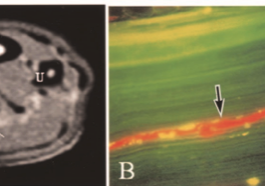
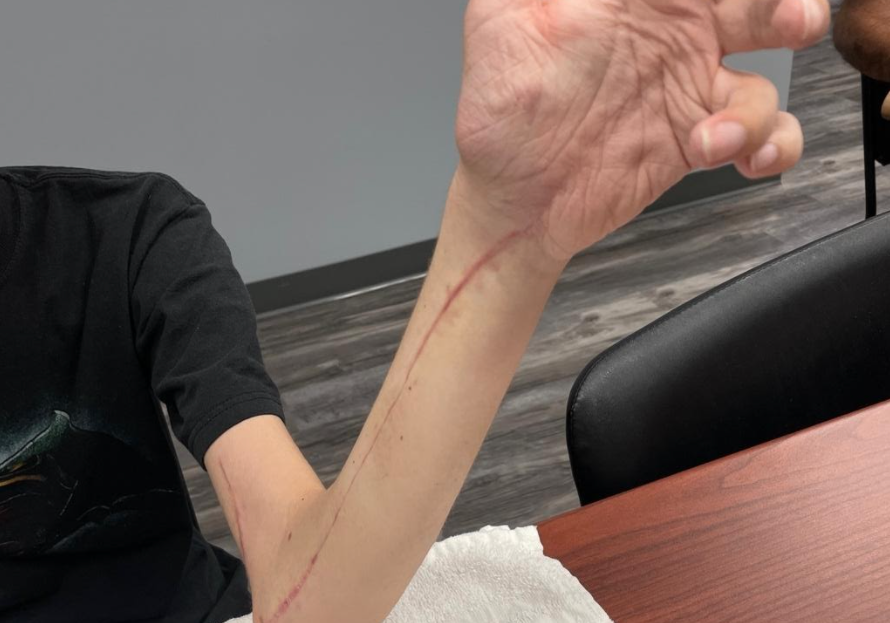


Do you have a picture of what to do with the chip bag please? I didnt fully understand how it’s used.